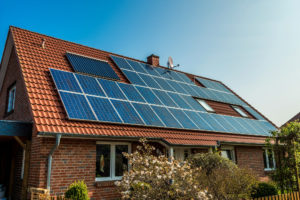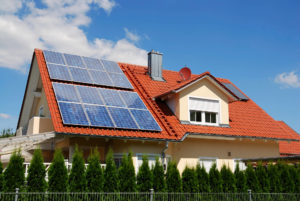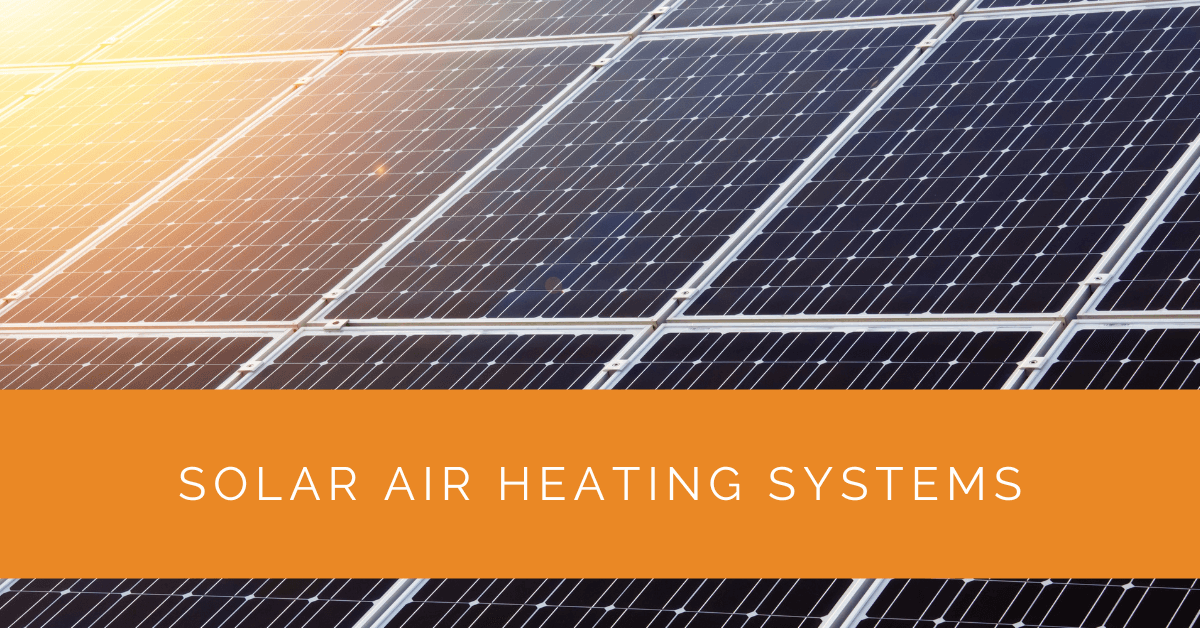Solar air heating systems offer a sustainable and cost-effective solution for residential and commercial heating needs. These systems generate and distribute heated air by harnessing the sun’s power, reducing reliance on traditional energy sources. This article will explore the benefits, components, working principles, DIY options, and maintenance of solar air heating systems.
Contents
- 1 Key Takeaways
- 2 The Components of Solar Air Heating Systems
- 3 Types of Solar Air Heating Systems
- 4 How Solar Air Heaters Work
- 5 Benefits and Payback of Solar Air Heating Systems
- 6 DIY Solar Air Heating: Building Your System
- 7 Solar Air Heaters: Easy Maintenance and Operation
- 8 Case Study: Implementing Solar Air Heating Systems for a Commercial Building
- 9 Expert Insights From Our Solar Panel Installers About Solar Air Heating Systems
- 10 Experience Solar Excellence with Us!
- 11 Conclusion
Key Takeaways
- Solar air heating systems harness the power of the sun to provide sustainable and cost-effective heating for residential and commercial spaces.
- These systems utilize solar collectors, ventilation mechanisms, and passive solar design principles to generate and distribute heated air.
- The benefits of solar air heating include renewable energy usage, cost savings, reduced environmental impact, and the potential for DIY projects.
The Components of Solar Air Heating Systems
Solar air heating systems consist of several key components that work together to generate and distribute heated air. The primary components include:
Solar Air Heater Collectors: Harnessing Solar Thermal Energy
Solar air heater collectors, also known as solar thermal collectors, are the system’s heart. These collectors absorb solar radiation and convert it into thermal energy. Common collector designs include glazed and unglazed collectors. Glazed collectors have a transparent cover to enhance heat absorption and retention, while unglazed collectors are simpler and more suitable for warm climates.
Ventilation and Air Circulation: Efficient Heat Distribution
Solar air heating systems utilize ventilation and air circulation mechanisms to effectively distribute the heated air throughout the building. A well-designed ventilation system ensures the heated air reaches the desired areas while maintaining a balanced airflow. Proper air circulation can be achieved through natural convection or with the help of fans or blowers.
Passive Solar Design Principles: Optimizing Heating Efficiency
Passive solar design principles play a vital role in maximizing the efficiency of solar air heating systems. Orienting the system components, such as collectors and air outlets, towards the sun’s path optimizes solar radiation absorption. Insulating ductwork and minimizing heat losses also contribute to efficient heating and energy savings.
Types of Solar Air Heating Systems
Solar air heating systems come in various types, each with unique characteristics and applications. The three main types are:
Active Solar Air Heaters: Enhancing Efficiency with Mechanical Components
Active solar air heaters incorporate mechanical components to enhance heat transfer and airflow. These systems use fans or blowers to facilitate air circulation, improving the overall efficiency and performance of the heating system. Active systems are suitable for residential and commercial applications, providing reliable and controlled heating.
Passive Solar Air Heaters: Utilizing Natural Convection for Heating
Passive solar air heaters rely on natural convection to circulate air through the collector and into the living space. These systems do not require additional mechanical components, making them simpler and more cost-effective. Passive systems are ideal for regions with ample solar radiation and moderate climate conditions.
Hybrid Solar Air Heating Systems: Combining Active and Passive Components
Hybrid solar air heating systems combine the best of both active and passive systems. They incorporate mechanical components, such as fans or blowers, to enhance airflow and heat distribution while utilizing passive principles for efficient heating. Hybrid systems offer versatility and can be tailored to meet specific heating requirements.

How Solar Air Heaters Work
Solar air heaters follow a series of steps to convert solar radiation into heated air for space heating. The working process can be summarized as follows:
- Solar Radiation Absorption: The solar collector, often made of materials with high solar absorption properties, absorbs solar radiation.
- Conversion to Heat: The absorbed solar radiation is converted into heat energy, increasing the temperature of the collector.
- Airflow and Heat Exchange: The heated air circulates through the collector and absorbs the generated heat. The airflow can be driven by natural convection or with the help of fans or blowers.
- Distribution: The heated air is distributed throughout the building, providing warmth and comfort.
Benefits and Payback of Solar Air Heating Systems
Solar air heating systems offer numerous benefits, both environmentally and economically. Some key advantages include:
- Renewable Energy Source: Solar air heating systems utilize clean and renewable solar energy, reducing reliance on fossil fuels and decreasing carbon emissions.
- Energy Cost Savings: By harnessing free solar energy, these systems can significantly reduce heating costs, leading to long-term savings on energy bills.
- Heating Independence: Solar air heating systems provide heating independence, reducing dependence on external energy sources and offering increased resilience.
- Environmentally Friendly: Solar air heating reduces greenhouse gas emissions and helps combat climate change, contributing to a healthier planet.
Calculating the payback period for solar air heating systems depends on various factors, including system size, local climate, energy consumption, and available incentives. Generally, solar air heating systems offer favorable payback periods, especially in regions with ample solar radiation and high energy costs.
DIY Solar Air Heating: Building Your System
Building a DIY solar air heating system can be a rewarding and cost-effective project for those with basic DIY skills. Here’s a step-by-step guide to constructing a simple solar air heater:
- Collector Design: Determine the collector design that suits your needs, considering available space, solar exposure, and desired airflow. Popular designs include glazed or unglazed collector panels and pop-can collectors.
- Material Selection: Gather the necessary materials, such as insulation boards, absorber plates, glazing, and vents. Ensure they suit the intended application and provide good thermal insulation and heat transfer properties.
- Construction: Assemble the collector components, following the design specifications. Proper sealing, insulation, and airflow control are needed to optimize performance.
- Installation and Integration: Install the solar air heater on a south-facing wall or roof, ensuring proper orientation and angling for maximum solar radiation absorption. Connect the system to the ventilation system of the building, allowing heated air to be distributed effectively.
It’s important to note that DIY solar air heating projects should be carried out cautiously and follow local building codes and regulations. Consulting with professionals or experienced individuals in the field can provide valuable guidance and ensure a safe and efficient system.

Solar Air Heaters: Easy Maintenance and Operation
Solar air heating systems require minimal maintenance and are relatively easy to operate. Here are some tips for maintaining and optimizing the performance of your solar air heating system:
- Regular Inspection: Periodically check the collector for any damage, such as cracks or leaks. Ensure the glazing remains transparent and free of dirt or debris.
- Air Filter Maintenance: Regularly clean or replace air filters to maintain proper airflow and maximize heating efficiency.
- Ductwork Inspection: Inspect the ductwork for leaks, obstructions, or insulation issues. Repair or replace damaged components as necessary.
- System Monitoring: Monitor system performance, including airflow, temperature differentials, and energy output, to identify deviations or potential issues.
- Seasonal Adjustments: Adjust system settings or collector angling according to seasonal variations in solar radiation to optimize heating efficiency.
By following these maintenance practices and monitoring the system’s performance, you can ensure optimal operation and longevity of your solar air heating system.
Case Study: Implementing Solar Air Heating Systems for a Commercial Building
Background
At Solar Panels Network USA, we take pride in delivering innovative and sustainable energy solutions to our clients. One of our recent projects involved installing a solar air heating system in a commercial building to enhance energy efficiency and reduce heating costs. This case study highlights our approach, the challenges we faced, and the successful implementation of this green heating solution.
Project Overview
The project aimed to provide an eco-friendly heating solution for a commercial office building. The building owner sought to reduce reliance on traditional heating methods, cut energy costs, and demonstrate a commitment to sustainability. Our goal was to design and install a solar air heating system that would meet these requirements while ensuring seamless integration with the building’s existing infrastructure.
Implementation
Assessment and Planning
Our first step was to conduct a thorough assessment of the building’s heating needs and its suitability for a solar air heating system. We evaluated the building’s orientation, roof space, and sun exposure to determine the optimal placement for the solar air collectors. We also analyzed the building’s current heating system to ensure compatibility with the new solar solution.
Design and Customization
Based on our assessment, we designed a customized solar air heating system tailored to the building’s specific needs. We opted for a combination of glazed solar air heater collectors and an active ventilation system to maximize heat absorption and distribution. The system was designed to be modular, allowing for future expansion if necessary.
Installation Process
The installation involved several key steps:
Reinforcing the Roof and Installing Collectors
We began by reinforcing the roof structure to support the weight of the solar air collectors. The collectors were then mounted on the south-facing section of the roof to ensure maximum sunlight exposure. We used secure mounting brackets and sealants to ensure stability and prevent any potential leaks.
Ventilation and Air Circulation System
Next, we installed an active ventilation system to facilitate the efficient distribution of heated air throughout the building. This included ductwork, fans, and air outlets strategically placed to optimize airflow and ensure even heating across all office spaces.
Integration with Existing Heating System
We integrated the solar air heating system with the building’s existing HVAC system, allowing for seamless switching between solar and traditional heating methods as needed. This hybrid approach ensured a continuous and reliable heat supply, regardless of weather conditions.
Testing and Optimization
After installation, we conducted rigorous testing to ensure the system’s performance met our design specifications. We monitored airflow, temperature differentials, and energy output, making adjustments as necessary to optimize efficiency.
Results
The solar air heating system delivered impressive results, providing a sustainable and cost-effective heating solution for the commercial building. Key outcomes included:
Significant Energy Savings
The building experienced a substantial reduction in heating costs, with the solar air heating system covering a significant portion of the building’s heating needs. This resulted in lower energy bills and a quicker return on investment.
Enhanced Environmental Impact
By reducing reliance on fossil fuels, the solar air heating system contributed to a notable decrease in the building’s carbon footprint. The project underscored the building owner’s commitment to sustainability and environmental stewardship.
Improved Indoor Comfort
The efficient distribution of heated air ensured a comfortable indoor environment for employees, enhancing overall workplace satisfaction and productivity. The active ventilation system effectively maintained consistent temperatures across all office areas.
Summary
Our project demonstrated the effectiveness and benefits of implementing a solar air heating system in a commercial building. This sustainable solution provided significant energy savings, reduced environmental impact, and improved indoor comfort. By leveraging solar air heating technology, we successfully delivered a heating solution that met the client’s needs and showcased the potential of renewable energy in commercial applications. Solar Panels Network USA remains committed to providing innovative and sustainable energy solutions, helping our clients embrace a greener future.
Expert Insights From Our Solar Panel Installers About Solar Air Heating Systems
Solar air heating systems are a game-changer for residential and commercial spaces. They provide an eco-friendly heating solution that reduces reliance on fossil fuels and lowers energy costs significantly.
Chief Solar Technician
One of the key benefits of solar air heaters is their simplicity and low maintenance requirements. These systems can last for decades with minimal upkeep, making them a smart investment for any property owner.
Senior Solar Installer
DIY solar air heating projects are increasingly popular. They are not only cost-effective but also provide a hands-on way to engage with renewable energy solutions. Proper design and installation can yield impressive results.
Solar Installation Expert
Experience Solar Excellence with Us!
Trust in Solar Panels Network USA, where our seasoned experts deliver top-quality solar solutions for homes and businesses nationwide. With a legacy of countless successful installations and a commitment to sustainable energy, we’re your reliable partner in the solar journey. Ready for a brighter, eco-friendly future? Call us now at (855) 427-0058 and harness the power of the sun!
Conclusion
Solar air heating systems provide an environmentally friendly, cost-effective, and sustainable solution for residential and commercial heating needs. These systems offer efficient space heating by harnessing the sun’s power while reducing reliance on traditional energy sources. Whether you opt for pre-manufactured systems or embark on a DIY project, solar air heating systems present an opportunity to embrace renewable energy and maximize heating efficiency. Embrace solar air heating technology and experience the benefits of a cleaner and more sustainable heating solution.
About the Author
Solar Panels Network USA stands at the forefront of solar energy solutions, driven by a team of seasoned solar engineers and energy consultants. With over decades of experience in delivering high-quality solar installations and maintenance, we are committed to promoting sustainable energy through customer-centric, tailored solutions. Our articles reflect this commitment, crafted collaboratively by experts to provide accurate, up-to-date insights into solar technology, ensuring our readers are well-informed and empowered in their solar energy decisions.

